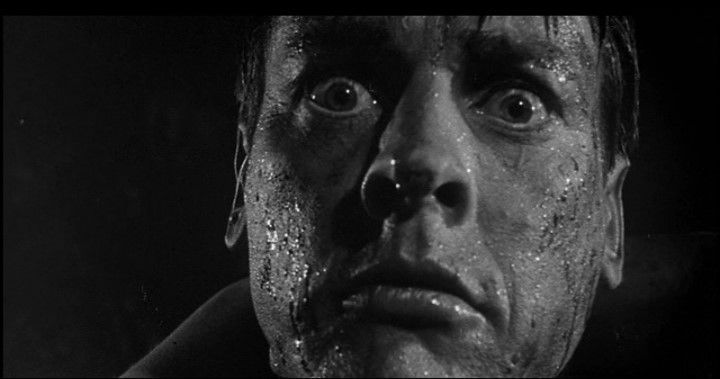tags: reality, cinema, cinematic doubles, emotionalism, cinematic imagery
It has been a few years since I saw the most recent interpretation of Invasion of the Body Snatchers, the notorious box-office flop The Invasion, starring Nicole Kidman and Daniel Craig. But as a result of having seen the 2007 remake, what struck me while I was watching the original film was the way in which the residents of the town were replaced by the pod people. In the recent version, humans are converted to pod people through alien life forms that resemble a disease or an infection – the main character is infected at one point when a pod person spits on her (luckily she doesn’t fall asleep). This difference, while acting as an interesting observation on current paranoia about disease and infection, also serves to emphasize the fact that in the 1956 version, humans are literally replaced by their pod people doubles.
It is always an interesting phenomenon when a movie portrays doubles, because what is the cinematic image itself but a double of reality – a hyper-reality that might be seen more real than reality itself (especially so with the brightness of Technicolor). The pod-people of Invasion of the Body Snatchers might be read as a metaphor for the world of the cinema screen itself.
This is perhaps best seen by the famous scene which originally should have been the end of the film – the shot of the doctor as a he desperately tries to convince the people in their cars that they’ll be next. The camera cuts to a closeup of the doctor’s face as he looks directly at the camera and speaks to the audience, breaking the fourth wall and telling them that the “They” are already here, and that the film’s audience is “next”. In such a way, the audience of the film is literally confronted by its own the double – the image of the cinema screen – and threatened to already be in danger of being be replaced.
If w are to read the pod people as metaphors for the imagery of the cinema, then it is an interesting decision that it is the pod people are non-emotional as compared to their original counterparts. The characters in movies are usually embodiments of much more emotion than their real life counterparts. (This is particularly so when one considers one of the popular forms of cinema during the 1950s – the Hollywood melodrama, a genres which was known for its high levels of emotionalism). Of course the most common reading of this portrayal in the film is that the pod people are a representation of Americans swept up by McCarthyism, or of communists swept up by the ideologies of their state.
But another group the film calls to mind is, of course, those living under the Nazi regime. One cannot forget the way in which imagery, particularly cinematic imagery, was used to play upon their viewers’ emotions to spread the ideology of the state. Many people think of Leni Riefenstahl’s imfamous Triumph of the Will when they think of Nazi films, but in reality, Triumph of the Will became so famous because it stands out in terms of cinematic ingenuity compared to most other Nazi films of the time. Josef Goebbels played a huge role in determining the types of films that were made during this period, and for the most part, films were intended to act not as political films, but as light entertainment (with the proper ideology worked in throughout the plot) – not too terribly different from the melodramas that would later on become so common in the US in the 1950s.
Reading the film as a metaphor for the way in which the cinematic image can be used to duplicate and even replace reality itself, what then can we understand from the film’s portrayal of emotion & lack of emotion and the role that it plays in popular cinema?

0 comments:
Post a Comment